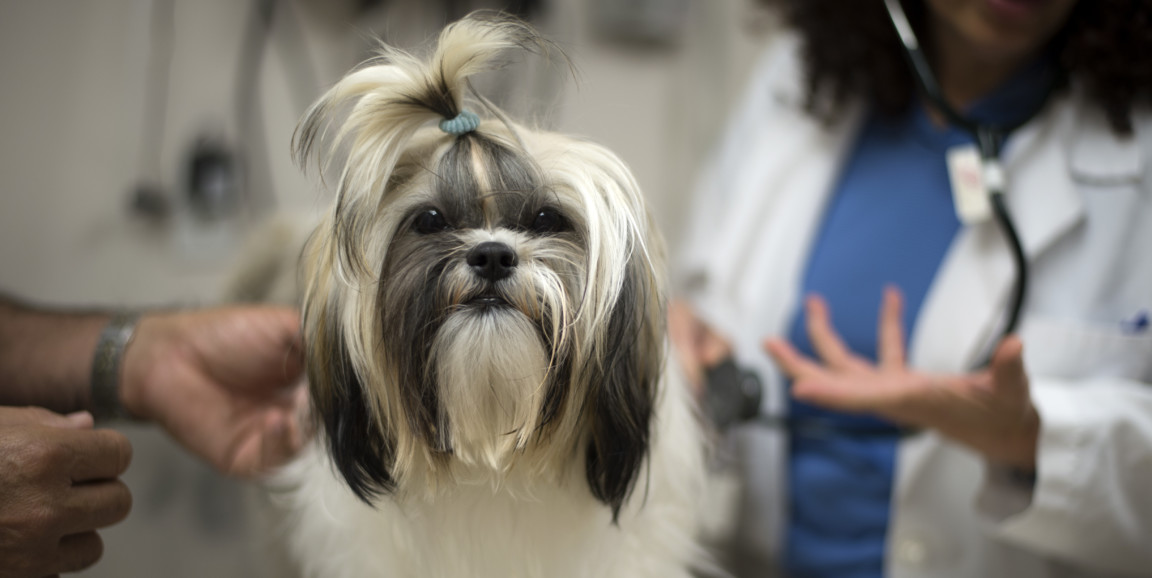As artificial intelligence continues to find inlets into human medicine, James Zou, PhD, assistant professor of biomedical data science, has found another use for AI: animal medicine.
When pets visit a veterinarian, doctors type out notes in paragraph form to document the visit — there's no systematic or widespread infrastructure in place for pet electronic health records. And while hand-captured notes work fine to document that one visit, in that one clinic, it limits how the data can be used and shared.
"Unlike human electronic health records, there aren't standardized ways to map free text typed on a computer into codes that denote a specific type of disease," said Zou. "So there are millions of vet clinical records that are essentially wasted because they're so cumbersome to work with. Clinics don’t have the infrastructure to extract information from these medical records, but there's a lot of really interesting information in them and they might even come to bear on human health."
Now, Zou and his team have devised a solution rooted in artificial intelligence, called DeepTag. DeepTag is an algorithm that essentially reads the typed-out notes from a vet and predicts specific diseases that are relevant for the animal. It boils the paragraph of medical notes into codes that represent certain ailments, symptoms or diseases.
A paper describing DeepTag appears in npg Digital Medicine. Allen Nie, a machine learning researcher, and research scientist Ashley Zehnder, DVM, PhD, share lead authorship.
There's been a tremendous amount of progress in AI understanding and applying natural language, said Zou. "AI is now much better at understanding human languages and being able to respond to them, and we're leveraging that progress to build algorithms that can scan across the paragraph to actually read the clinical notes and interpret each word," explained Zou. "We're not explicitly telling the algorithm what words are associated with what disease, instead, it's finding the key words that are associated with specific diagnoses."
In training the algorithm, Zou collaborated with the College of Veterinary Medicine at Colorado State University, where a group of veterinary experts annotated more than 100,000 clinical notes, assigning disease codes to each case. Nie used that dataset to "teach" the algorithm the types of notes that paired with a particular disease. Then, the group further validated the algorithm's accuracy by testing it on pet clinical data collected from private veterinarian offices.
Broadly speaking, DeepTag would allow veterinarians to track the prevalence of disease in pets, and in the future, could even be a tool to track pet clinical drug trials. After all, we can learn a lot from the maladies of a malamute or disorders of a dachshund, Zou said.
Before a drug makes it to clinical trial in humans, it's typically tested in mice or rats for efficacy and safety. But the biology of small rodents can be quite different from that of a person, whereas a larger mammal, like a dog, can more accurately reflect how a human might respond to a treatment.
Likewise, just as is the case for sick people, there's sometimes a lack of sanctioned options to treat disease in pets, and clinical trials would be their best bet at recovery. But until now there's little infrastructure to keep tabs on how animals fair on new therapies. This, Zou hopes, is where DeepTag could open up new options.
"Dogs, which were the majority of patients that we documented using DeepTag, are a very good candidates for many of the drugs scientists develop for humans," he said. "And there's a growing interest in pharmacology and biotechnology to try to test, for example, new cancer treatments in dogs — it could be a win for both humans and their pets."
Since the paper published, Zou's been discussing applying the DeepTag algorithm to large vet clinics around the country, and locally in the San Francisco Bay Area. Soon, Zou said, their team will have a publicly-available platform that veterinarians anywhere in the world can use. "Once the platform is online, any veterinarian could go and use the platform to annotate their notes and see the results in real time."




